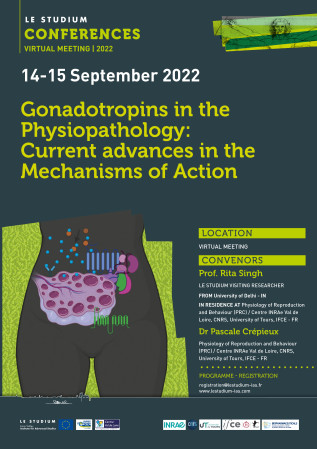Rita Singh

From
University of Delhi, Department of Zoology - IN
In residence at
Host scientist
Pascale Crépieux
BIOGRAPHY
Prof Rita Singh is a Professor in University of Delhi, a teacher for master students specialising in Molecular endocrinology and Reproduction. She did her PhD from University of Delhi in 1990 and since then her scientific research involves the biochemistry of gonadotropins, their receptor signaling, the molecular and metabolic defects in polycystic ovary syndrome (PCOS). She was a member of 9th Indian expedition to Antarctica in 1989. She has past affiliations with Medical school of University of Pennsylvania, USA, Virginia commonwealth University, and NUS, Singapore. She has received several prestigious awards such as LS Ramaswami oration award and gold medal for outstanding work in Reproductive health, Crest award for study on Cancer stem cells and Young Scientist award from Ministry of Science and Technology, India. She is a task force member in Environment ministry, HRD ministry and Indian council of Medical research. Not only her work on gonadotropin receptor signaling and defects in Polycystic ovary syndrome (PCOS) are well recognized, but also her various societal awareness programs in schools and colleges on the impact of environmental endocrine disruptors like plastics on the health of children and adolescents.
PROJECT
Interaction between the FSH receptor and Insulin receptor substrates (IRS-1 and IRS-2) in the physiopathology of the polycystic ovary syndrome
Background: Polycystic ovary syndrome (PCOS) is a genetically complex disorder often associated with elevated luteinizing hormone (LH), arrested follicular growth and subfertility/infertility. These women with high LH have difficulty in conceiving and gestational diabetes affects 50-61% of all PCOS pregnancies. Based on our earlier data, we hypothesize that the activation of insulin signaling components like insulin receptor substrates are severely impacted when there is hypersecretion of LH in PCOS women. Novelty: To elucidate the cause of metabolic abnormalities in PCOS, the focus of this study is to unravel the defects in the cross-talk between FSHR and Insulin receptor substrates (IRS-1 and -2) in the presence of high LH /hCG
Objectives:
1. To examine the mechanism of interaction of Insulin receptor substrates (IRS-1 and IRS-2) with FSHR, LHR and their signaling components.
2. To understand the role of Galpha/beta-arrestin in the cross-talk between FSHR and LHR signaling pathways.
3. To explore the role of LH-stimulated Ca2+ response in the attenuation of FSH responses.
Methods: Bioluminescence Resonance Energy Transfer (BRET) measurement will be done in HEK-293 cells after co-transfection with Luc8- and Venus-labelled FSHR, LHR, or Galpha and beta-arrestin, respectively in the presence of hormones with appropriate controls. The impact of high LH on FSH- and insulin-mediated glucose uptake and glycogen level coinciding with the structural changes observed by BRET using IRS-1 and IRS-2 as probes. High LH-stimulated Ca2+ responses will be monitored in HEK293 cells co-expressing FSHR and LHR.
Expected Outcomes: This study will elucidate the mechanism by which high LH may induce abnormal structure-function changes in the FSHR on binding with FSH. Heteromerization of FSHR and LHR coinciding with a decrease in sensitivity of FSH through change in the proximity of IRS proteins is expected. This study will be the first of its kind to establish adverse molecular changes in the signaling components of FSH and their cross-talk with IRS-1 and IRS-2 in the presence high LH.

